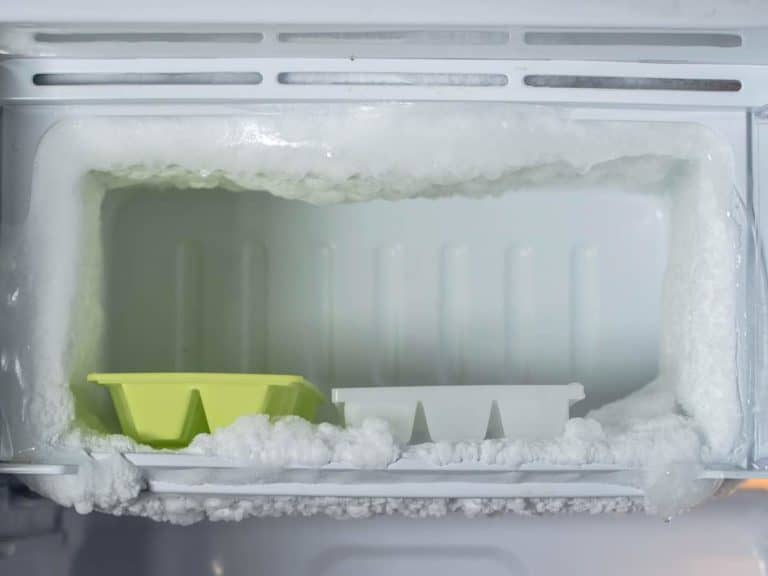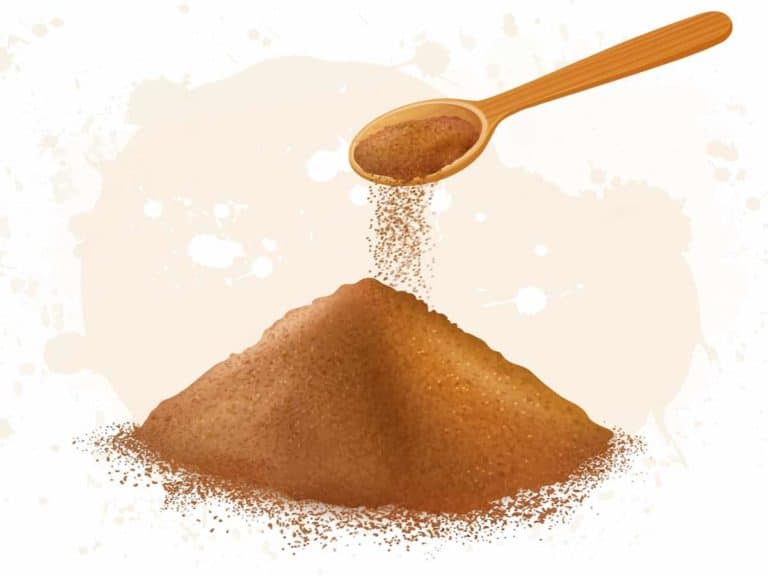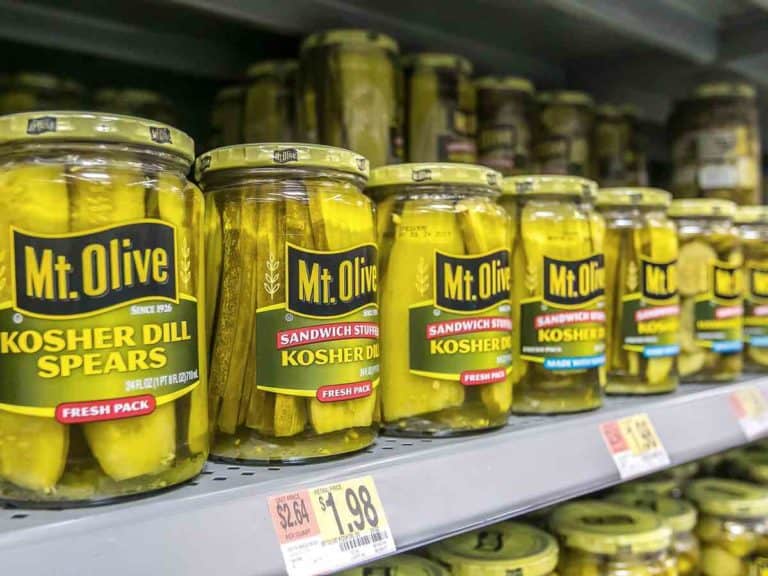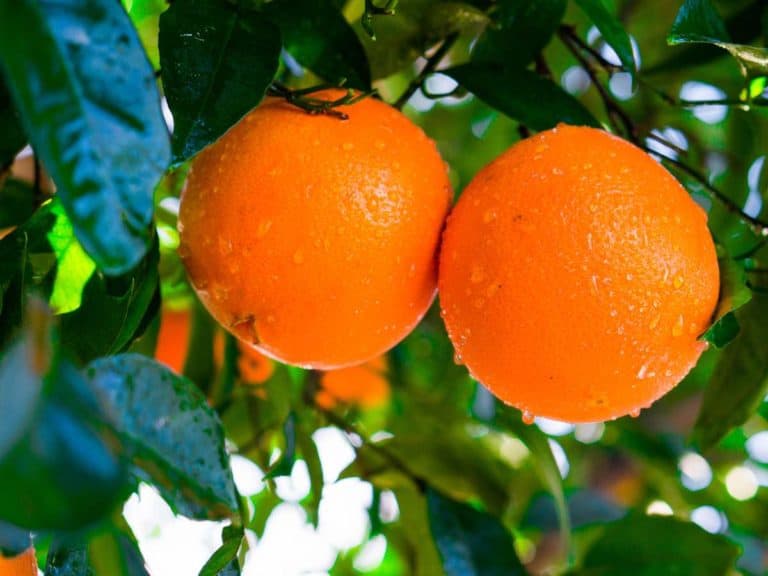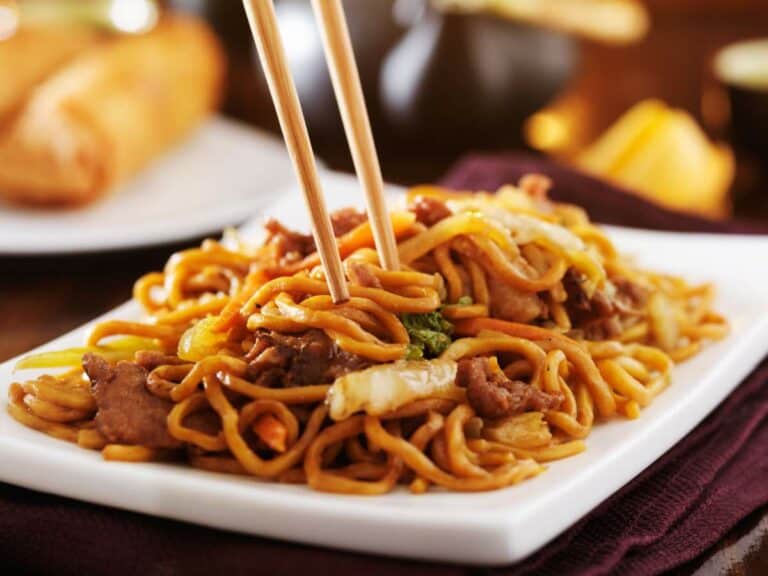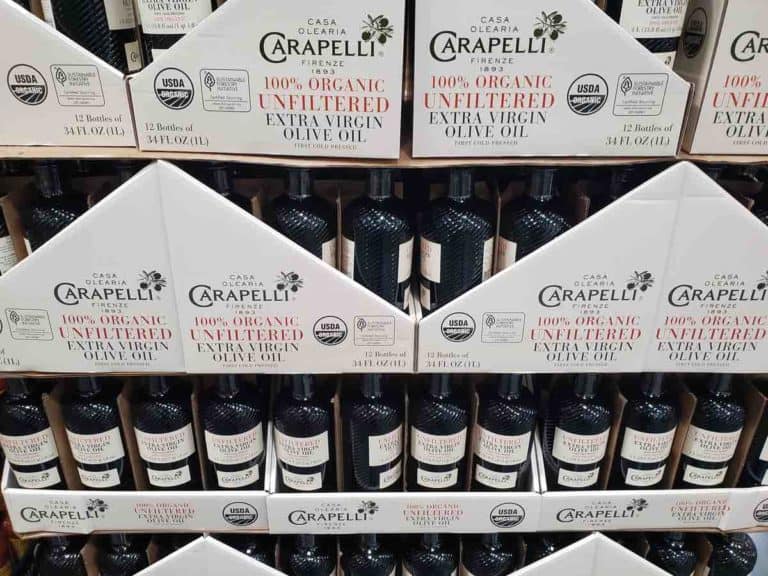What You Should Know Before Eating Shrimp Shells
Do you enjoy shrimp? If yes, you’re part of the majority of people who loved shrimps as well.
They are known to be a tasty treat, usually used in Asian cuisines, but you have probably never consumed a shrimp shell if you mainly eat western cuisine. If you are wondering if it’s safe to eat shrimp shells. Here is a straightforward answer:
In general, shrimp shells are edible and will not harm you. Common western dishes tend to remove the shells for texture, but some recipes keep the shells intact for added texture, enhance the flavor profile of the food, and the health benefits from eating shrimp shells.
You can safely eat shrimp shells, but if you are used to eating them without shells, should you do it immediately? If you are not yet convinced, here is some information you should know about eating shrimp shells.
Can You Eat Shrimp Shells?
As a general rule, you can eat shrimp shells. Shrimp looks beautiful and tastes so good, especially when cooked perfectly. When you look at the outer shells, you might just consider it as a barrier to the softness of the meat, right?
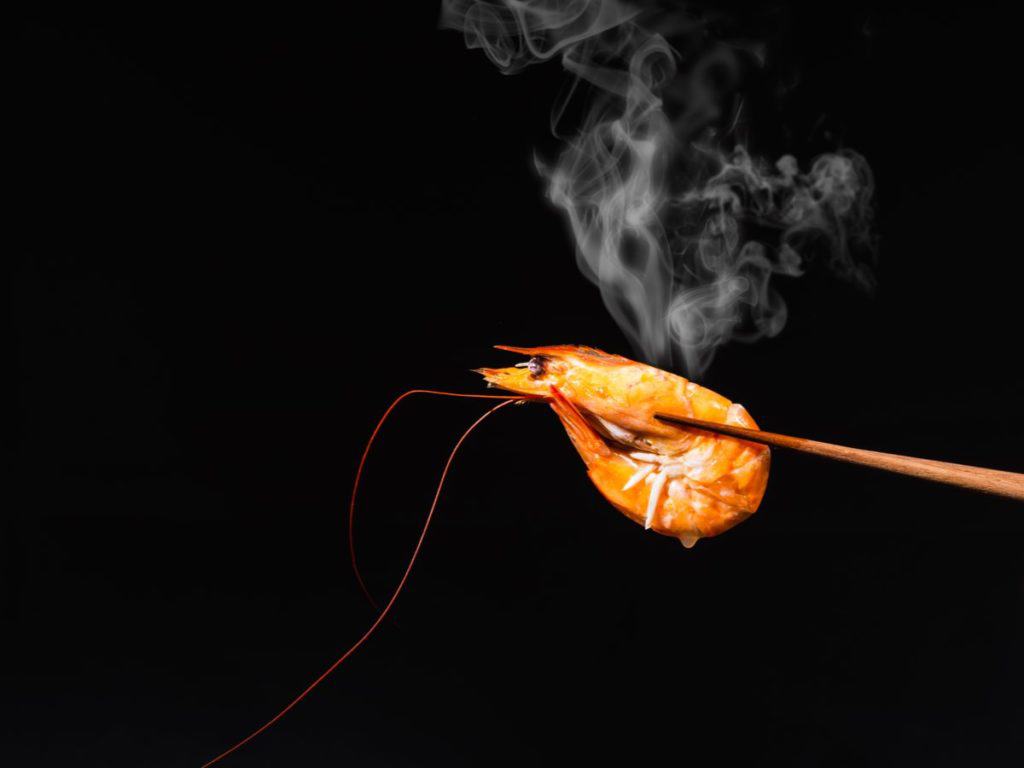
But, actually no, you can get the most of the shrimp by eating the whole of it.
Yes, it includes the head, shell, and tail.
Eating the shrimp with shells on is time-saving, producing less waste.
You can save both of your time and the chef’s time because none of you should deshell the shrimp. Removing the shells from the shrimp, be it before or after cooking it can be a little annoying, especially, when you are trying to remove it with a fork and spoon.
The next time you get a dish with the shell-on, keep in mind that you can eat it without removing any of its shells.
Read Also: Can You Eat Freezer-Burned Shrimp? (Here’s The Truth)
The Nutrition Of Shrimp Shells
Here’s something that very few people would know.
Shrimp shells are reasonably good for you and your health. Okay, that would be an exaggeration, but here’s the catch: Shrimp shells have no real health negatives, instead they are more into promoting health benefits. They are pretty yet simple biomaterials. Also, there are no bad compounds in the shells that can make you sick.
Shrimp shells can trap some minerals that add a little bit of nutritional value to the food. They contain a protein that’s just like keratin. Therefore, it means that adding them is not bad for you (unless you’re allergic), and they do offer some health value.
The Flavor Of Shrimp Shells
Uncooked and unseasoned, the shells have no color and no flavor at all. That’s one of the major reasons they are discarded in a lot of cuisines. The shells are great at trapping spices, seasonings, and other sources of flavor when cooked, making them delicious to suck on. When properly cooked, shells are flavorful and delicious.
Try adding shrimp shells to your broth, and they will deepen the flavor. Overall, shrimp shells have a lot to offer a dish. The challenge is to surpass the typical undesirable texture on dishes.
Popular Ways To Cook Shrimp Shells
Now that you know that shrimp shells are safe to eat, and can be tasty, you can discover some of the best cooking techniques.
Soft-shell bake or broil
It is a common technique for cooking soft-shelled crab, where the shell stays on throughout the whole coming process. The entire crab is eaten as it is, with shell and everything. Many cooks and chefs have applied this method to shrimp to get the same results. It is a popular cooking technique in New Orleans and cajun country but is also a niche food. A lot of people do not prefer the texture.
Use them in a broth or stock
Another completely different approach to cook shrimp shells is by putting them in a broth. It is probably the most common cooking technique in the world when it comes to shrimp shells. The shells ultimately dissolve into the stock, so you get extra flavor from the shells, without comprising the texture.
Frying the shrimp shells
It is common in the eastern part of the world to fry shrimp without removing the shells. When it is done correctly, the application of heat will embrittle the shells, making them easier to eat. They will disintegrate when you bite into the shrimp. It creates a unique texture and rich flavor profile, solving the texture problem while giving an exciting way to enjoy the shrimp.
Health Issues
Many people love shrimp; however, there are some health concerns to think of before you go and eat every shrimp shell you can find. You may think of allergies and gout, but let’s talk about allergies first.
Shellfish allergies are one of the most dangerous and serious allergies that can afflict a person. If you have any known allergies to shellfish, you need to avoid shrimp completely, including the shrimp shells and broths or stocks made with them. Even a small amount can trigger a potentially life-threatening reaction.
Another health concern related to shrimp is gout. Shrimp can increase the acid buildup that aggravates gout, causing severe discomfort. Although shrimp shells can induce less buildup than eating the entire prawn, they can trap some of the purines in the shrimp, leading to this condition.
Should You Remove The Shrimp Shells Before Cooking?
It depends on the type of dish. The way you cook the shrimp will affect the way you eat it later, so if you are wondering whether you should remove the shells or not, imagine how the diner will eat the shrimp.
Are they going to use their bare hand?
Are they going to use a spoon and enjoy it with some broth?
If the dish is supposed to be eaten with bare hands and the dish does not contain broth or soup, you can just leave the shell on. For example, you just want to grill or roast the shrimp, you don’t need to remove it. In fact, including the shells for cooking can add extra crunch to the overall dish.
When it comes to soft, creamy, and watery dishes such as soup or curry, the shrimps can be nicely enjoyed without the shells. Soup and curry are eaten using a spoon, and this type of dish is gentle, so removing the shells before cooking is an excellent idea.
Now, if the shrimp is sauteed or pan-fried, it is also a good idea to remove the shells, but consider the preference of the other family members. If they love crusty things and do not mind eating the entire shrimp, you can just leave the shells on.
Keep in mind that whether you decide to de-shell the shrimp or not, always devein the shrimps to clean them before cooking.
Are Shrimp Tails Edible?
You can eat the shrimp tails because they are edible. However, they are not meant to be eaten. They are kept mostly for flavor and presentation purposes, not necessarily to be eaten. It is much like the cartilage on chicken bones, some people love it while others pick the meat off, and do not touch it.
If you try to eat the tail of the shrimp, it is very chewy and hard, but it is easier to chew when the shrimp is very small. They have lots of flavors, but you can remove the tail if you like.
The bigger the shrimp, the harder the shell
Large shrimp, such as jumbo and colossal will have a larger and harder tail. It is not recommended to eat the tails, as they can cause a choking hazard.
Smaller shrimp tails are easier to chew through, but it’s up to your personal preferences. All shrimp tails and shells are made from chitin, which is a very hard yet brittle material common to all shellfish and insects. It acts as a very tough shield.
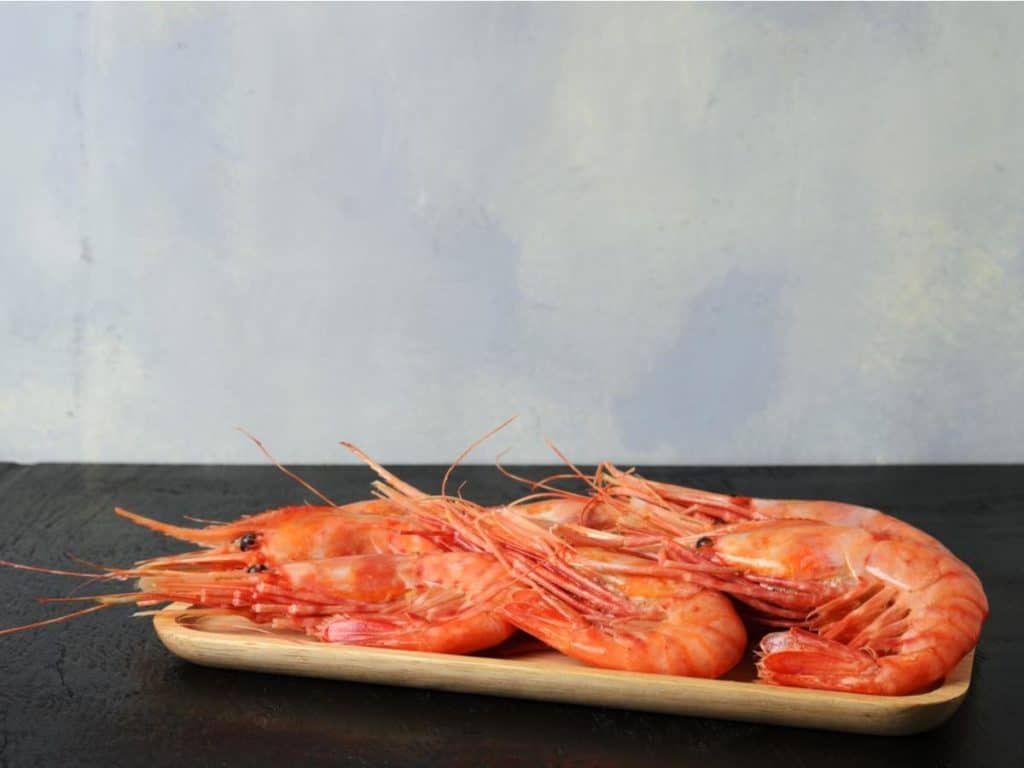
Tails are kept for presentation
If they are technically edible, but they are hard to eat, why are they still on your prawn salad? Well, obviously, they simply look nice. Of course, not every dish in the world will have the tails on. Shrimp cocktail usually has the tails on, such as in fried shrimp or seafood platter.
In meals where it is not quick and easy to remove the tails, they usually come off on their own. In dishes like pasta, salads, paella, and stir-fries. Still, it is up to the chef if the tails are kept on or not.
While you may feel that a tail-on shrimp in the salad is annoying, the chef also thinks the same. If you are unsure how the shrimp comes out, make sure to ask the waiter for the tails to be removed.
Tails are useful when deep-frying
There are cases when the shrimp tails are useful. Depending on what you’re eating and how it’s made, the tail itself can be a really convenient way to hold the shrimp. Think of breaded, fried shrimp popularly known as tempura. The only part that’s breaded is the meat so that you can hold the tail and bite off the end.
It also helps in picking the shrimp out of hot oil easier. If you have tongs or don’t want to disturb the breading while it cooks. It is about the extent, where you may find the tails useful when eating.
Leave the shrimp tails on for the flavor
If you’re a home cook, and you really want to get a nice shrimp flavor, just keep the tails on. You can leave them for flavor while cooking, but make sure to take them off once you are done cooking.
The tails contain extra chitin and shrimps, which can impart lots of flavors. It is useful in making stock to achieve the best flavor out there.
Keep the shrimp head for broth or stock
Yes, you may leave the heads too. However, only when making stock. Some people eat the heads too, but it’s a little more difficult. You have to suck the brains out of it. Some people love it and say that the flavor is all in the head. While others find it weird.
Whichever side you prefer, you can’t deny the fact that simmering the heads along the tails can make a really good stock. Of course, you can remove the shrimp head after cooking. There’s no reason to keep it on if you don’t want it. If you have a picky eater family member, then the heads and the tails really need to come off.
That’s pretty much about the shrimp tails. You can try eating one if you are curious, but make sure it’s a small shrimp with a small tail. You can just remove them after cooking.
FAQs
Can you eat shrimp legs?
Just like the tail and shell, shrimp legs are also edible. They are noticeably different from the other parts of the shrimp in an important way. When cooked, the legs can turn crispy. A lot of people enjoy the texture and eat the legs of the shrimp. These legs can collect seasoning that can be quite tasty too.
Most importantly, as long as you cook the shrimp, the legs are safe to consume, provided if you don’t have allergies.
What is shrimp shell powder?
As the name implies, it is a powder made from shrimp shells. The shells are cooked to add flavor, then they are dehydrated into a powder. Shrimp shell powder is a seasoning that is used in various dishes and many people love it.
Can you eat shrimp veins?
When properly cooked, you can eat shrimp veins and they are safe to it. However, they are largely considered the most undesirable part of the shrimp. Why? The vein part is where the shrimp collect its waste, and many people think it is very gross to eat the veins. It is possible to remove the veins while leaving the rest of the shrimp intact.
Is shrimp healthy?
Shrimp is viewed as a to some degree good food. It has some medical advantages, similar to protein and minerals, and generally, it has a healthy benefit comparable to chicken. Like chicken, the health effects of eating shrimp will rely upon the technique of cooking.
The main concern with shrimp is that it is popular to cook it with lots of butter, animal fat, and oil. The styles of cooking shrimp can make it an undesirable dish to devour in enormous sums. All things considered, seared or boiled shrimp without undesirable ingredients is fine to consume and is a safe source of protein.
All of this assumes that you are not allergic to shrimp or stomach-related intolerances to shrimp. If either of those is the situation, you may consider shrimp as unhealthy.
Does it matter where the shrimp is caught or farmed?
There is a difference between caught and farmed shrimps. Shrimp varies in size and biochemistry relying upon their surroundings. Shrimp will have various flavors depending upon the waters wherein they live. Somebody with enough experience can distinguish the origin of the shrimp by its taste.
What to do with the leftover shells?
Shrimp shells make incredible fish stock since they hold a significant flavor of the shrimp. Save the shells in the cooler until you need them. Then, at that point, boil them for around 20 minutes to make a speedy seafood stock to use instead of water when making a fish chowder, similar to this Clam Chowder recipe.
Do you have to devein all shrimp?
Probably not. Even though you call it “deveining”, the dark line you see on the backs of shrimp is their intestinal system. Eliminating it involves personal preference and taste, not hygiene. It’s not unsafe for us to eat.
If the vein is truly articulated—dim or thick—you might need to devein the shrimp for a tidier look. Bigger shrimp can likewise have grittier veins, which can have an unappealing surface.
So it’s ideal to devein the shrimp.
However, if the veins are not extremely obvious, or if the shrimp are minuscule, there’s no need to waste time and energy eliminating each vein.
How to peel and devein shrimp
Here are the steps on how to do it:
- Pull off the head and the legs.
- Starting with the head end, pull off the external shell. Depending upon how you mean to present the shrimp, you can keep the last section of the shell and the tail tip on, for enriching purposes. Place shells in a plastic bag, securely closed, and either dispose of or freeze to make shellfish stock.
- Utilizing a small paring knife, cut along the external edge of the shrimp’s back, around 1/4 inch down.
- If you can see it, with your fingers or the tip of your blade, eliminate and dispose of the vein that runs directly underneath the back. If you can’t see the vein, don’t waste time with it.
Return the peeled and deveined shrimp to your bowl of ice or ice water until you are prepared to utilize them.
